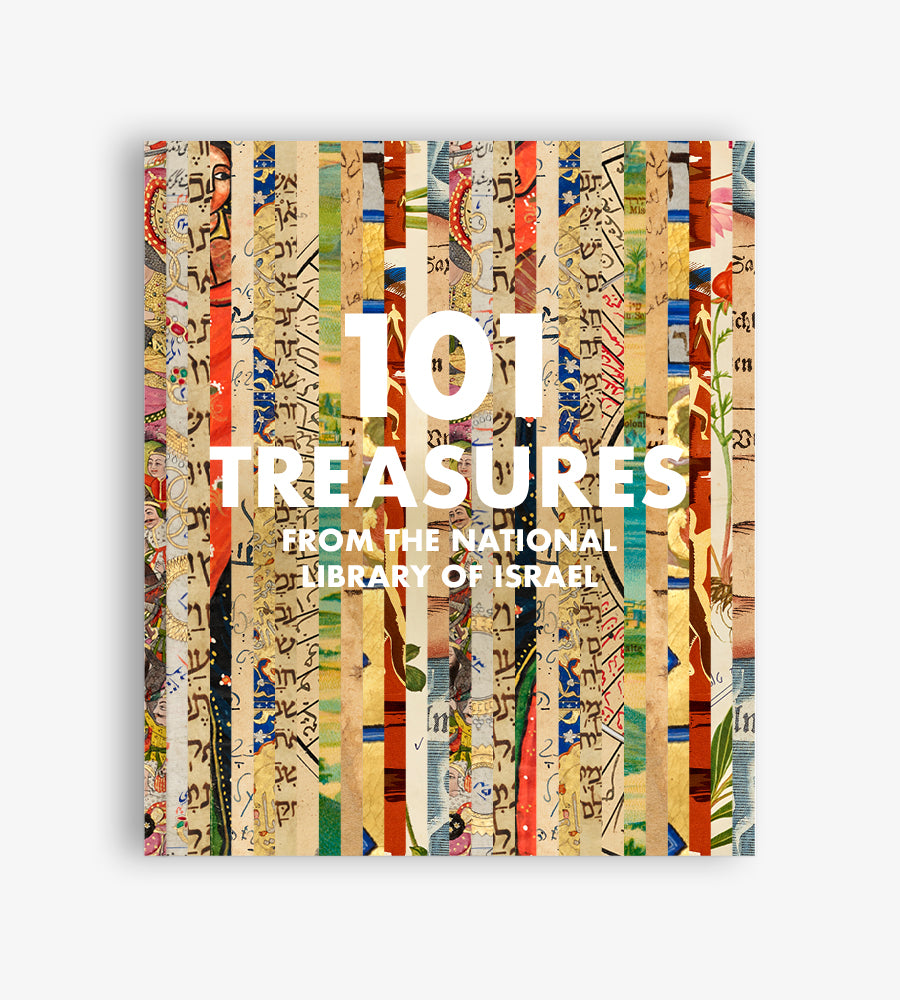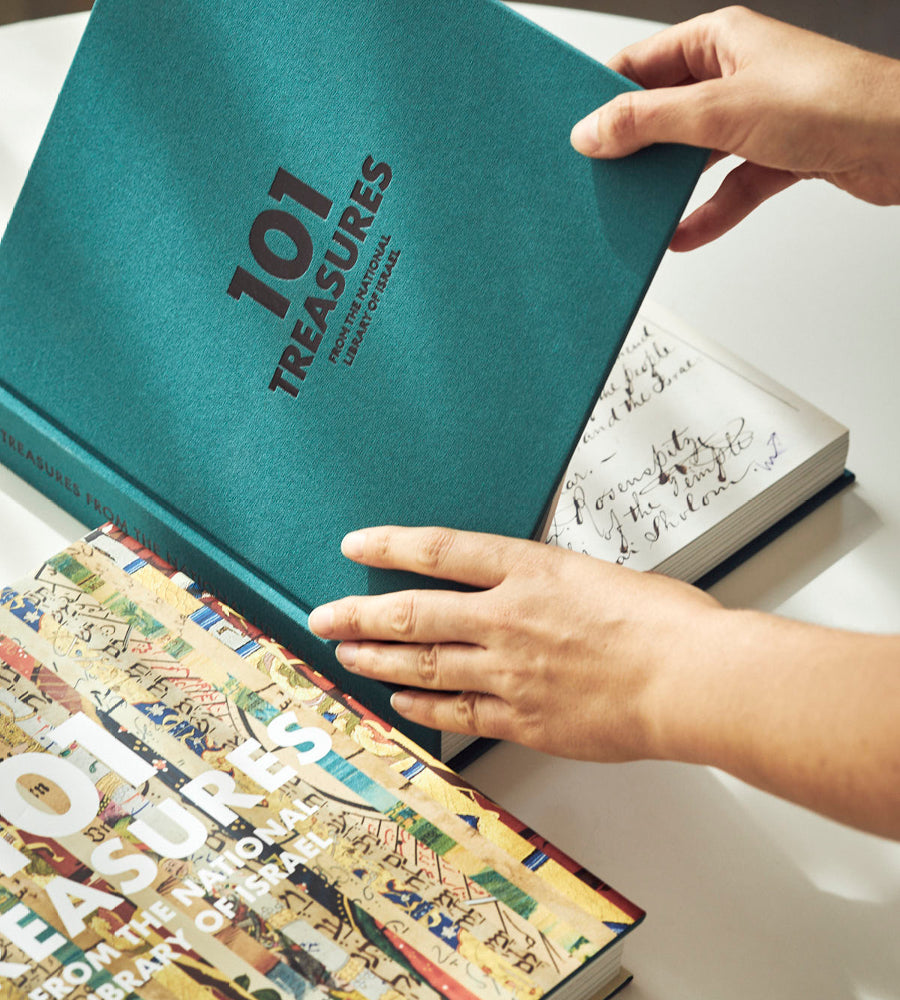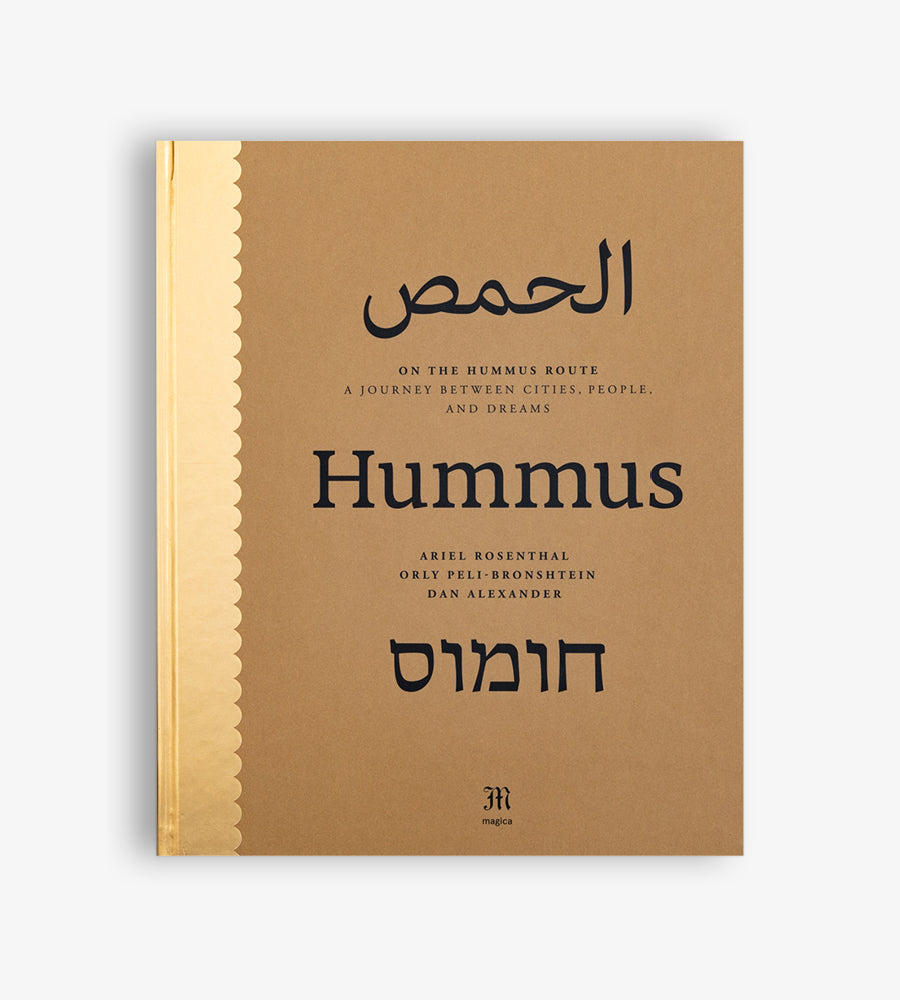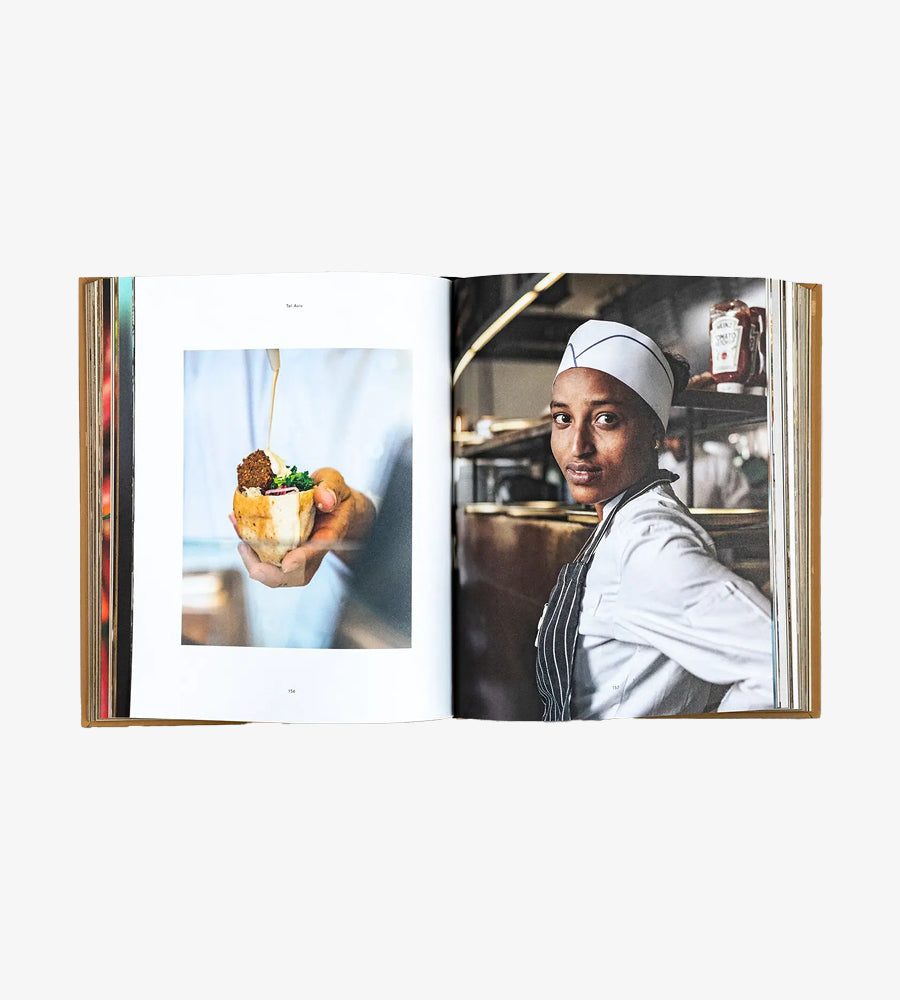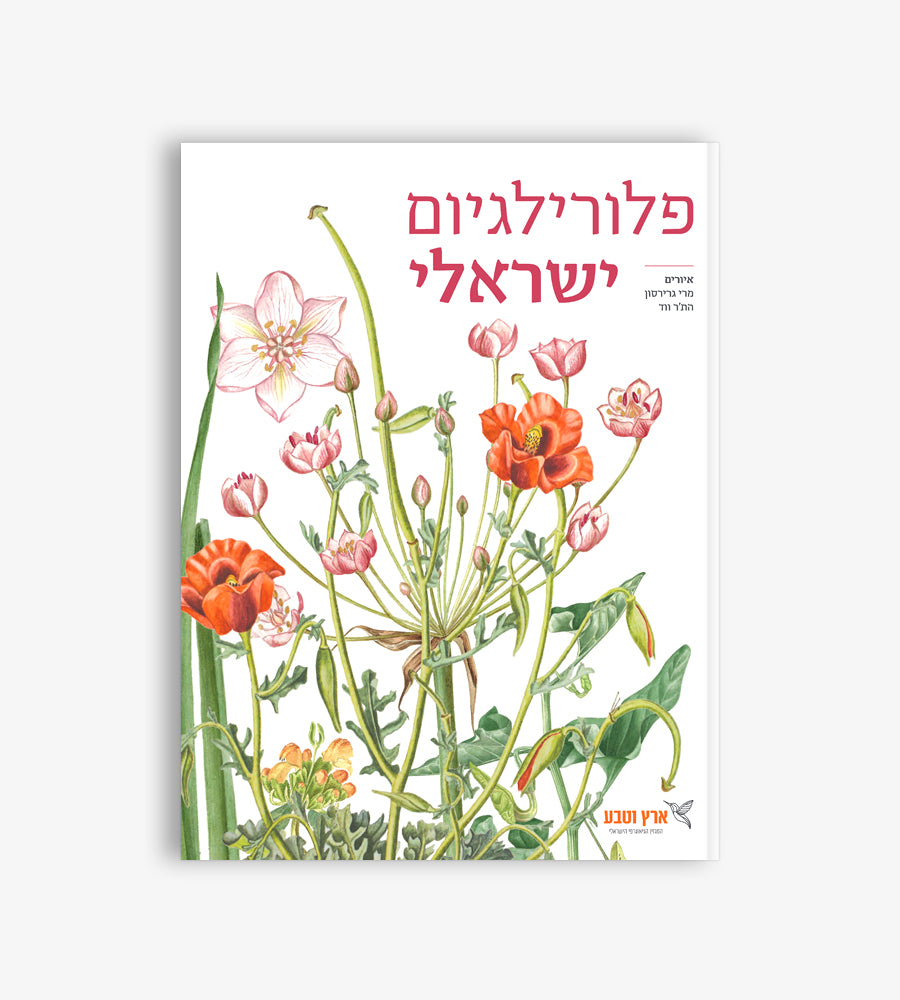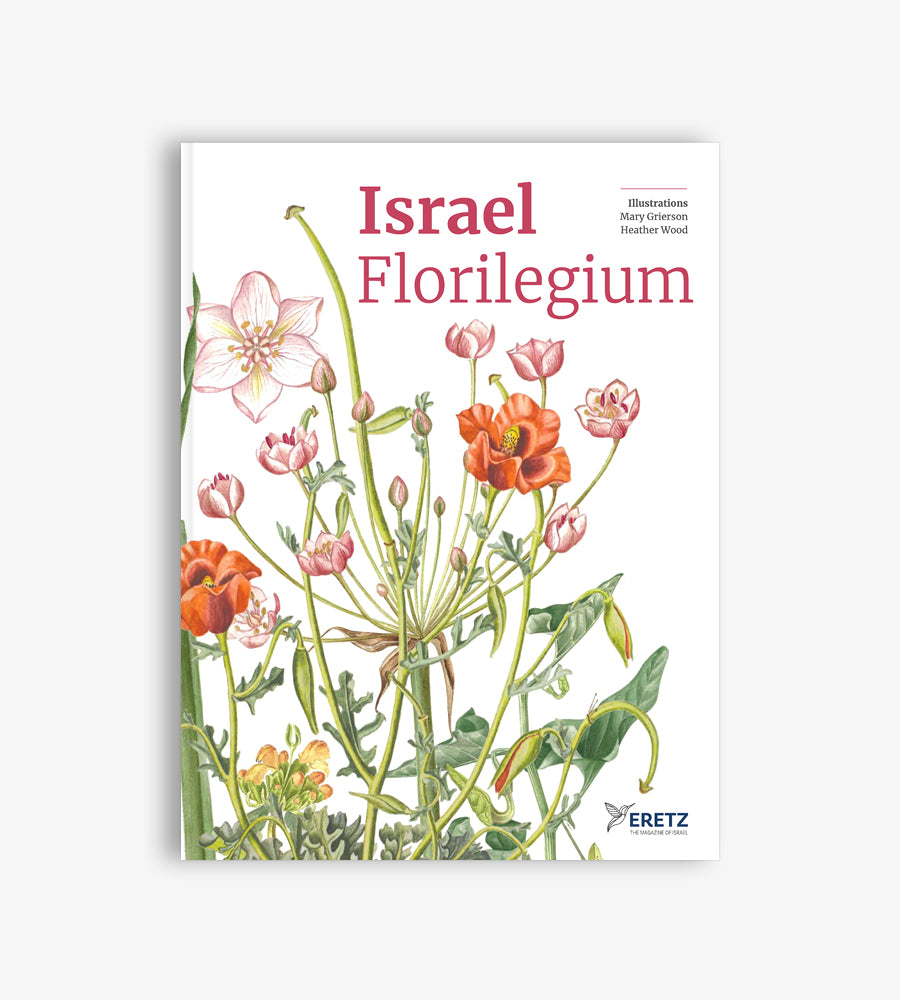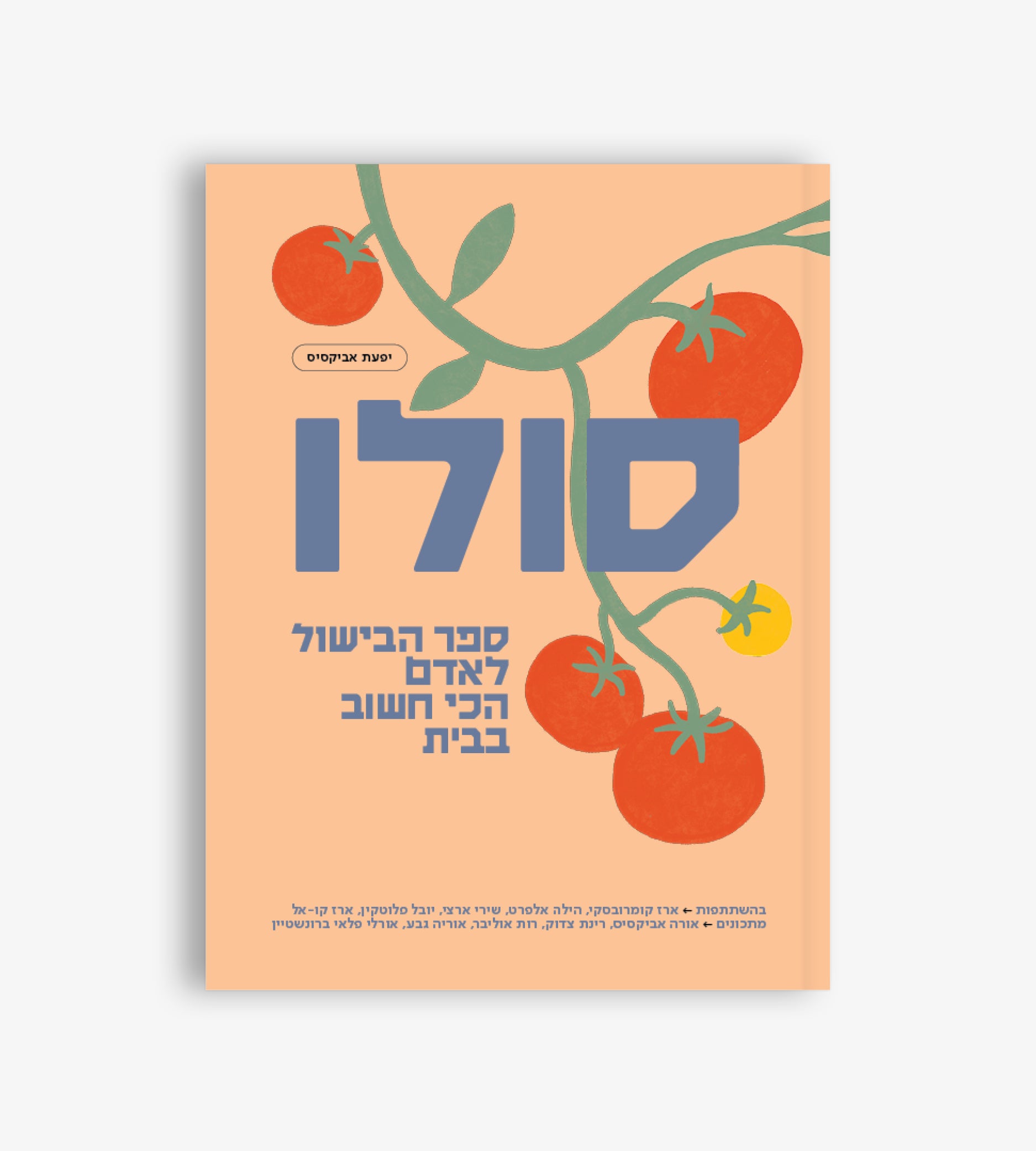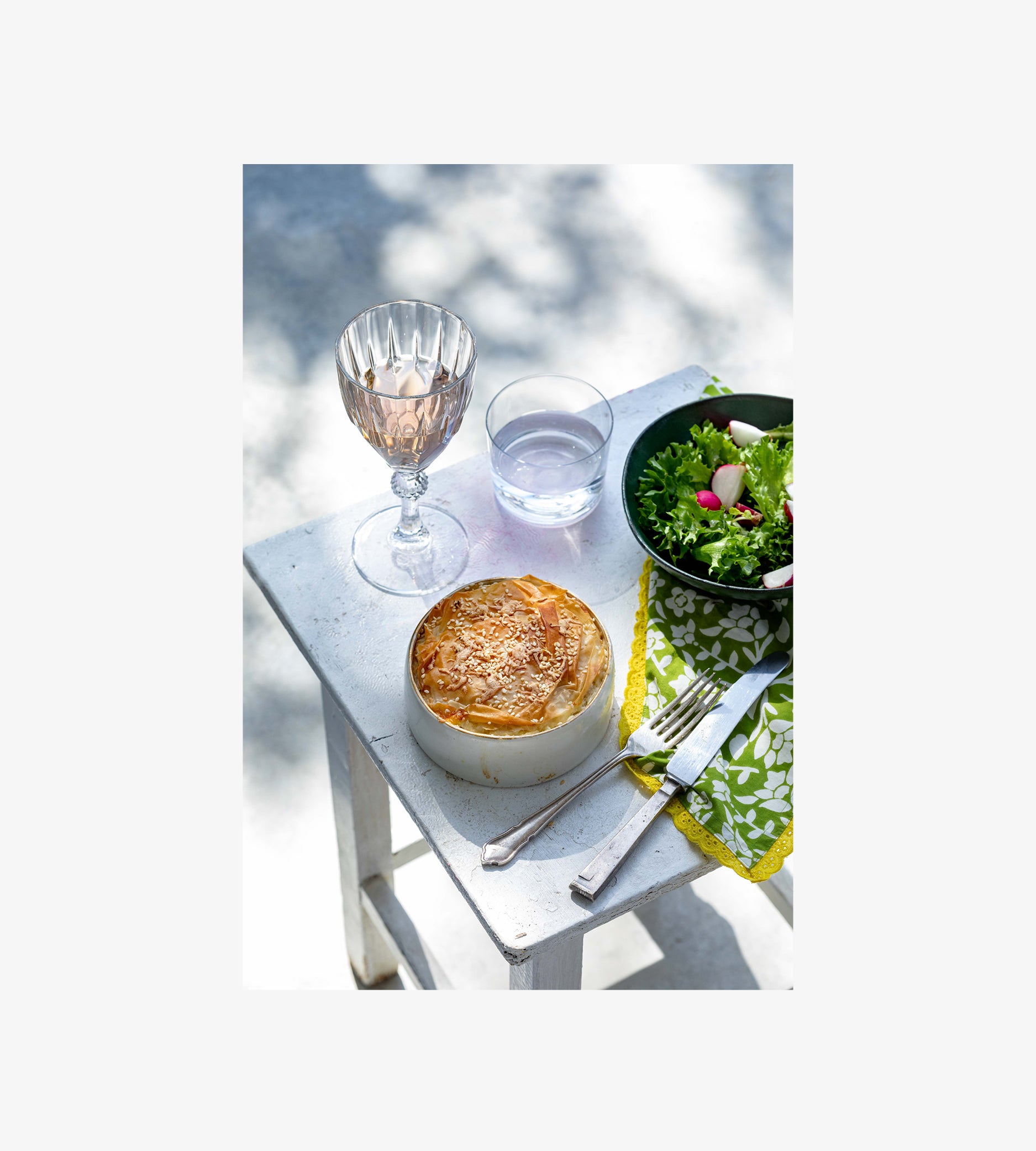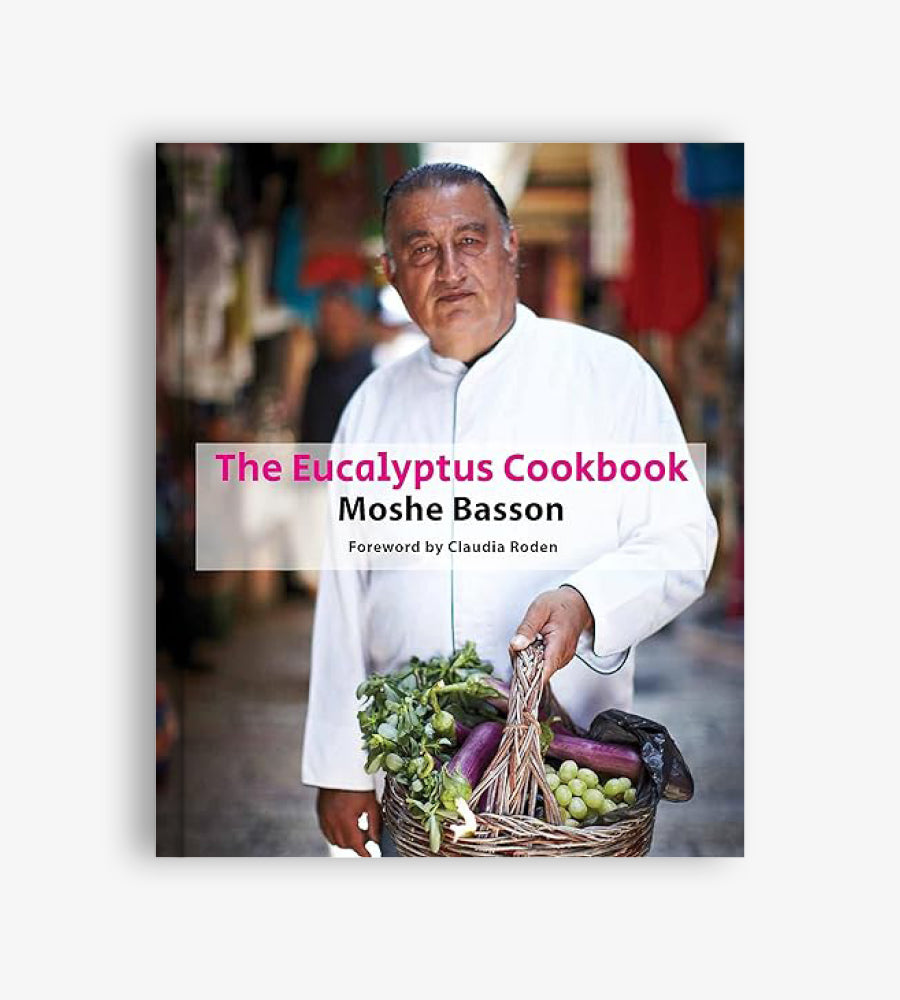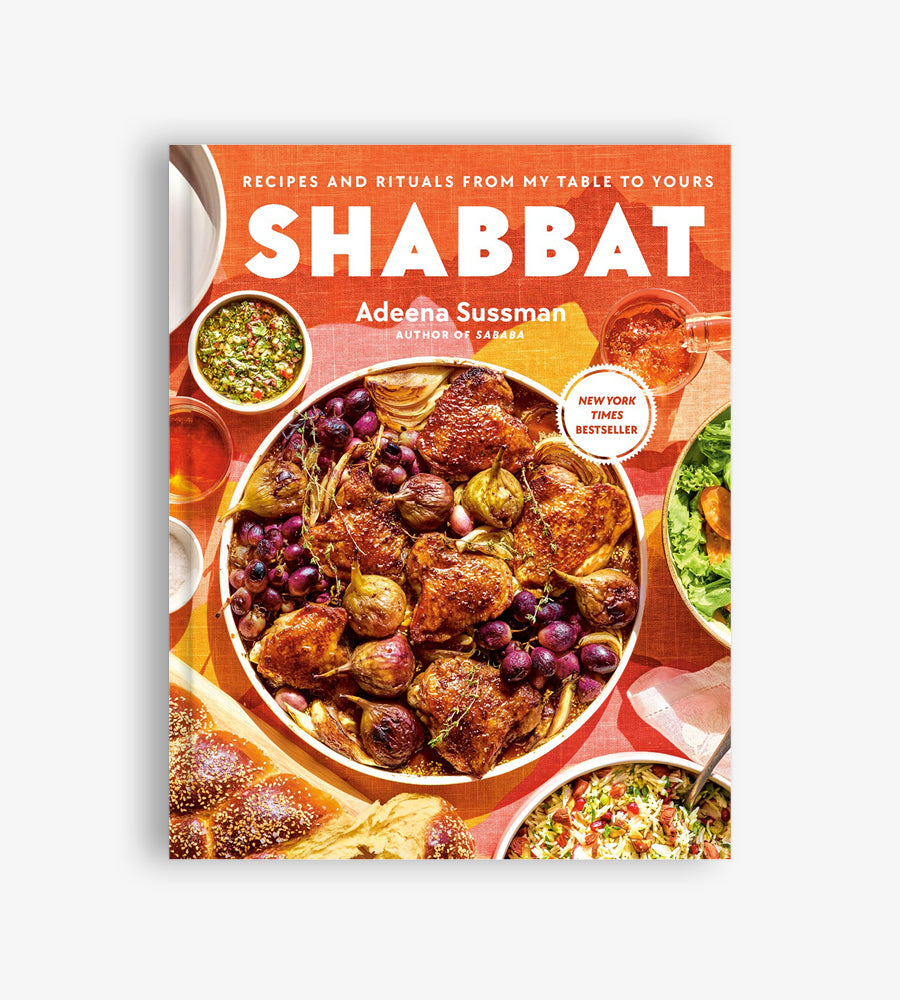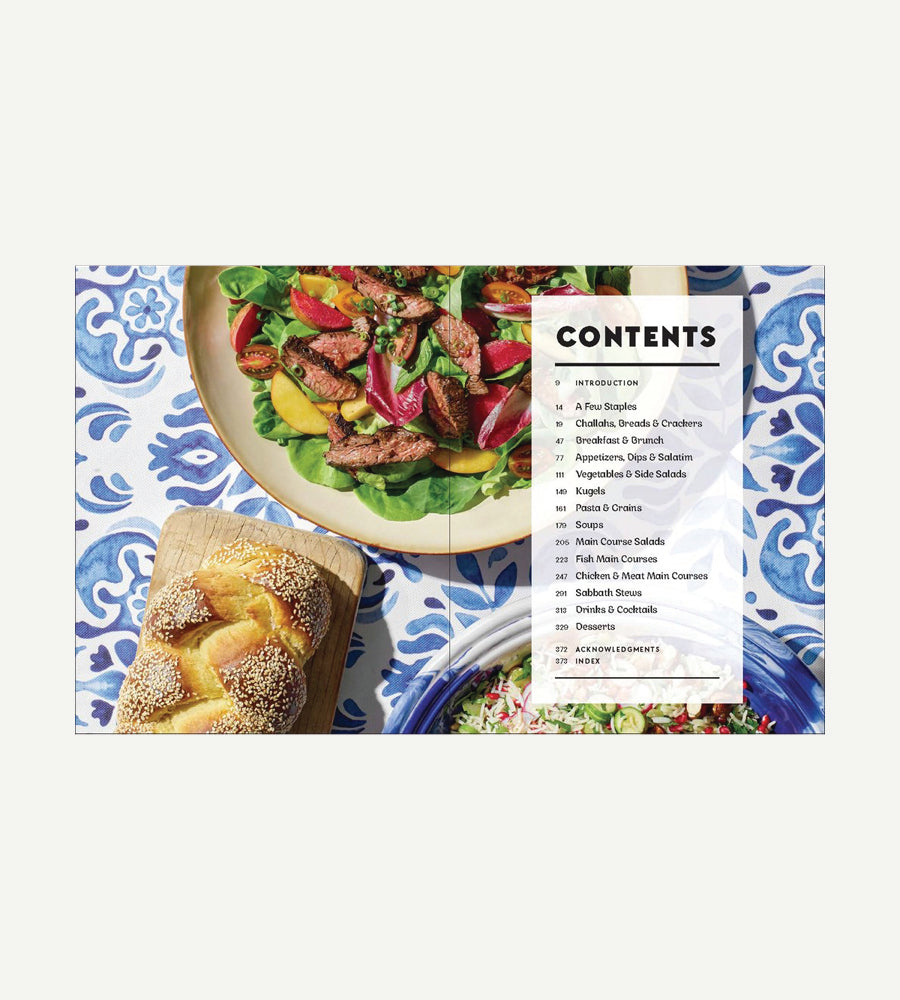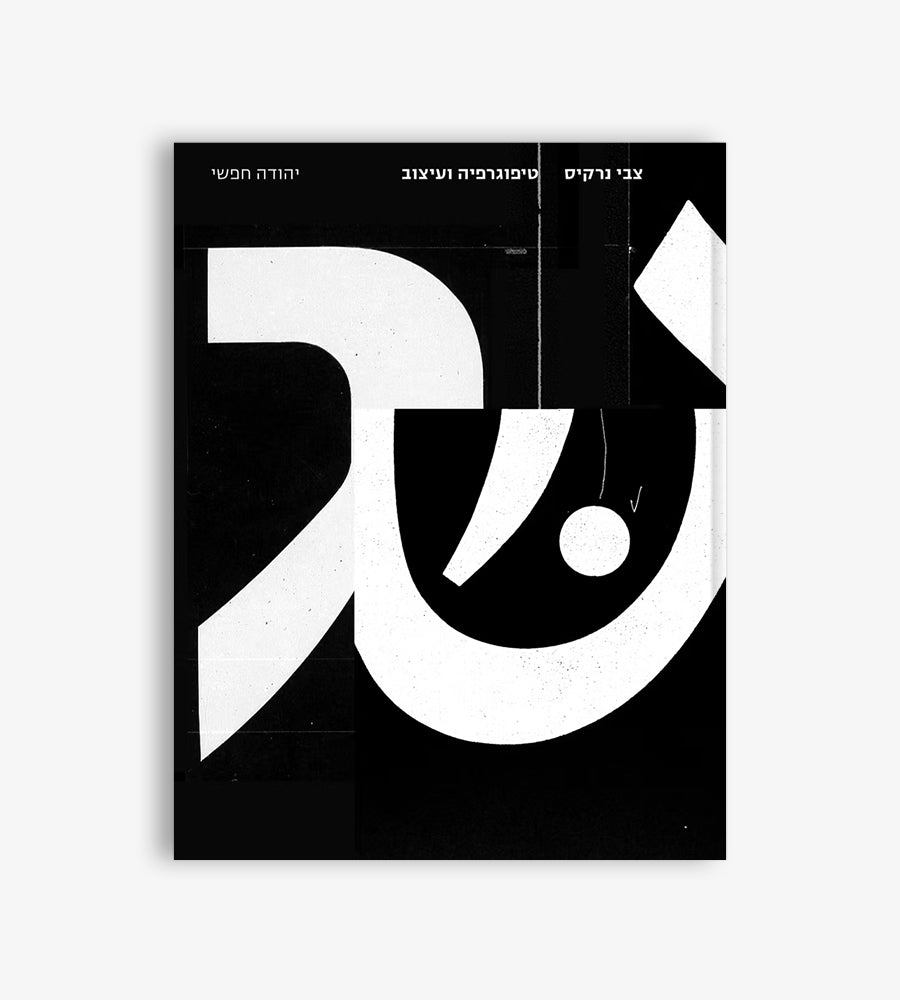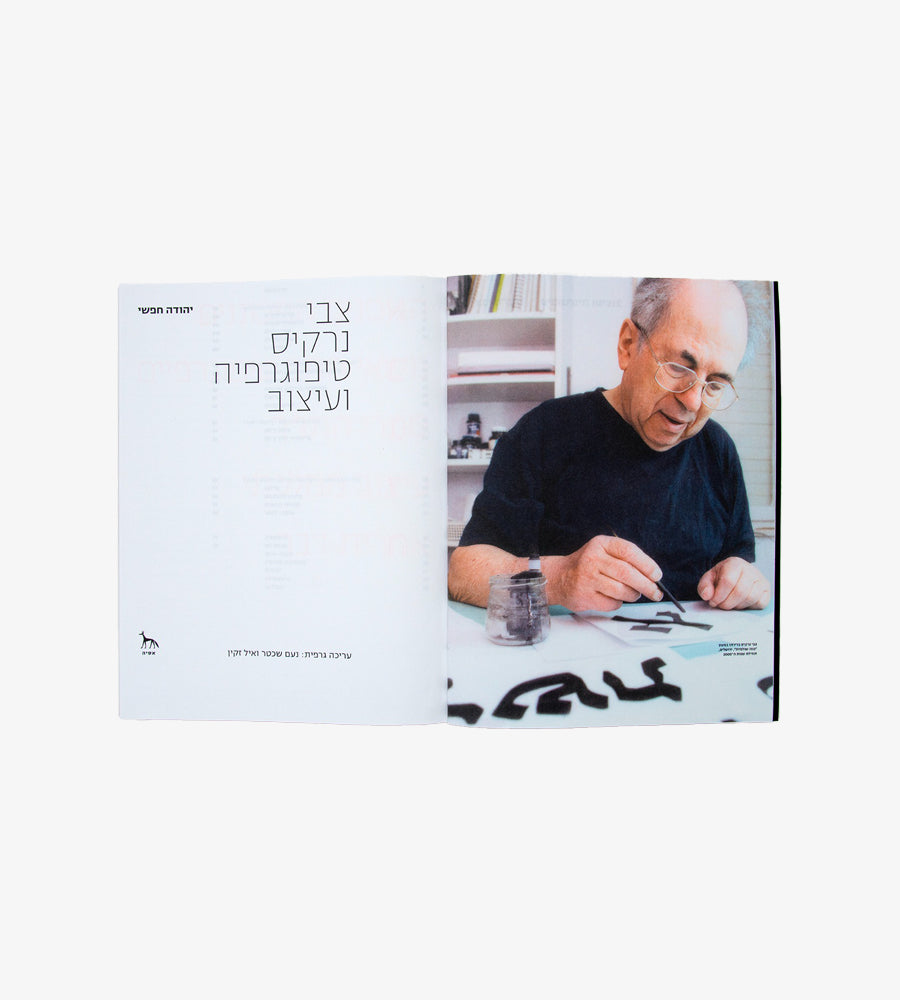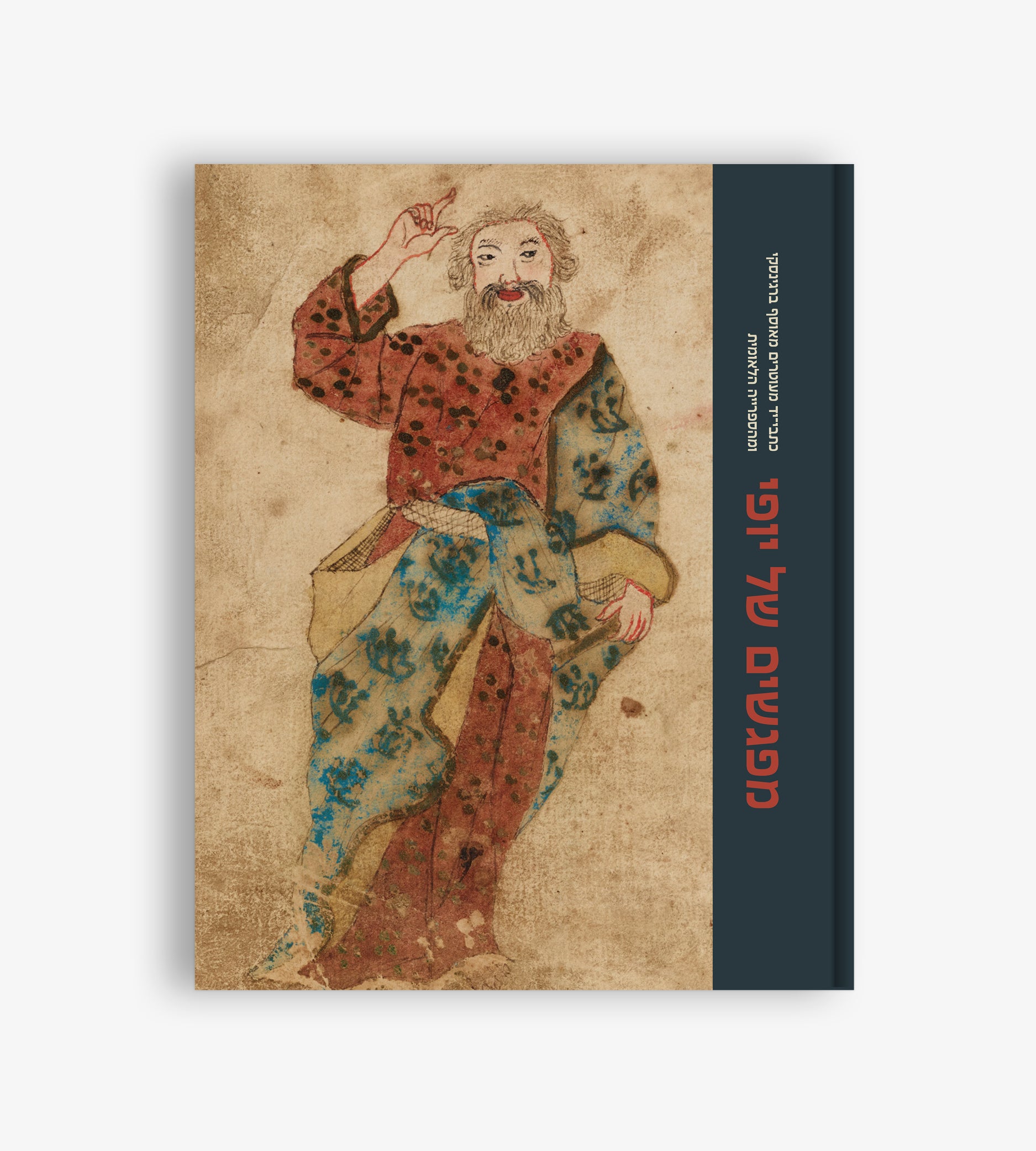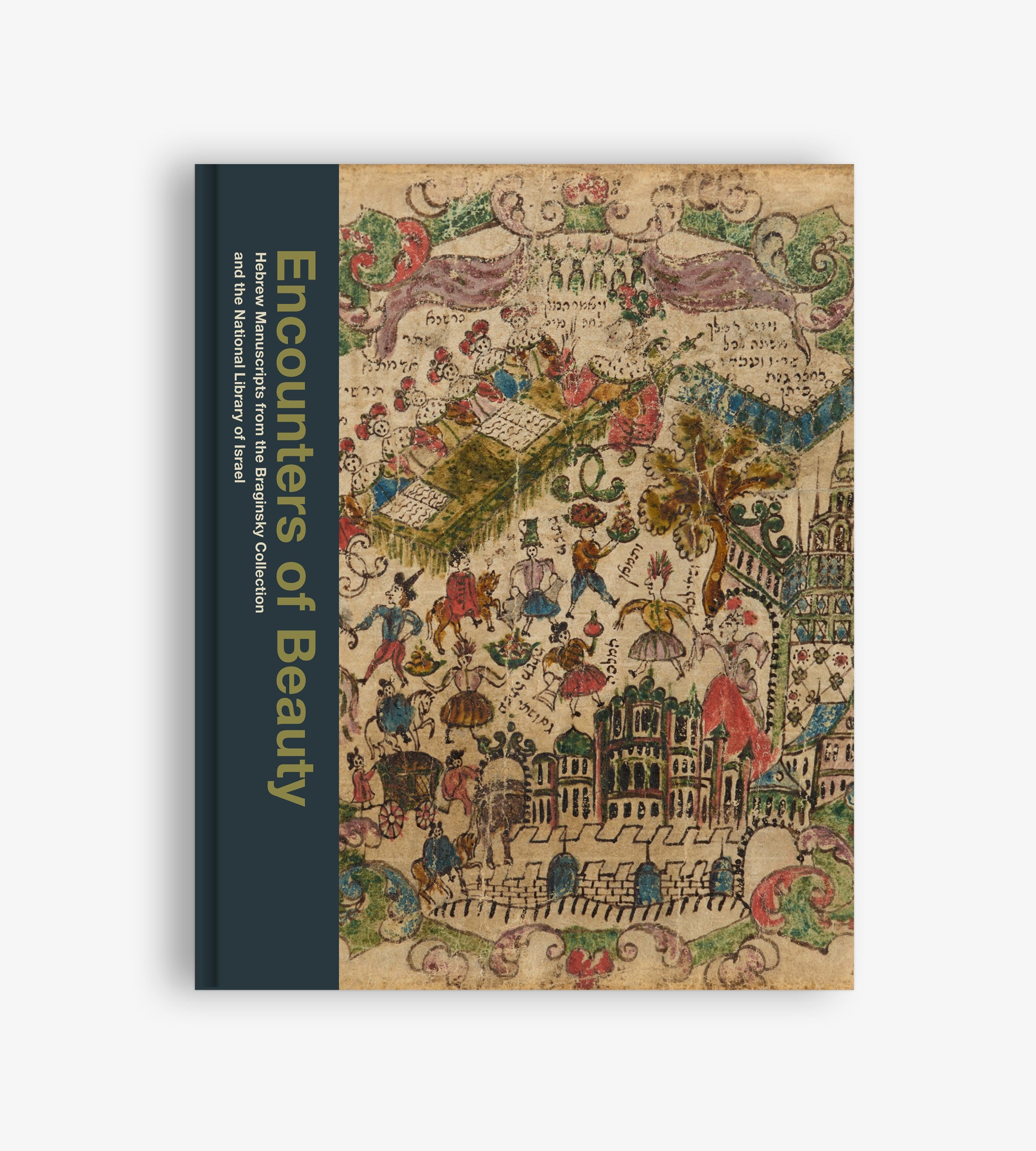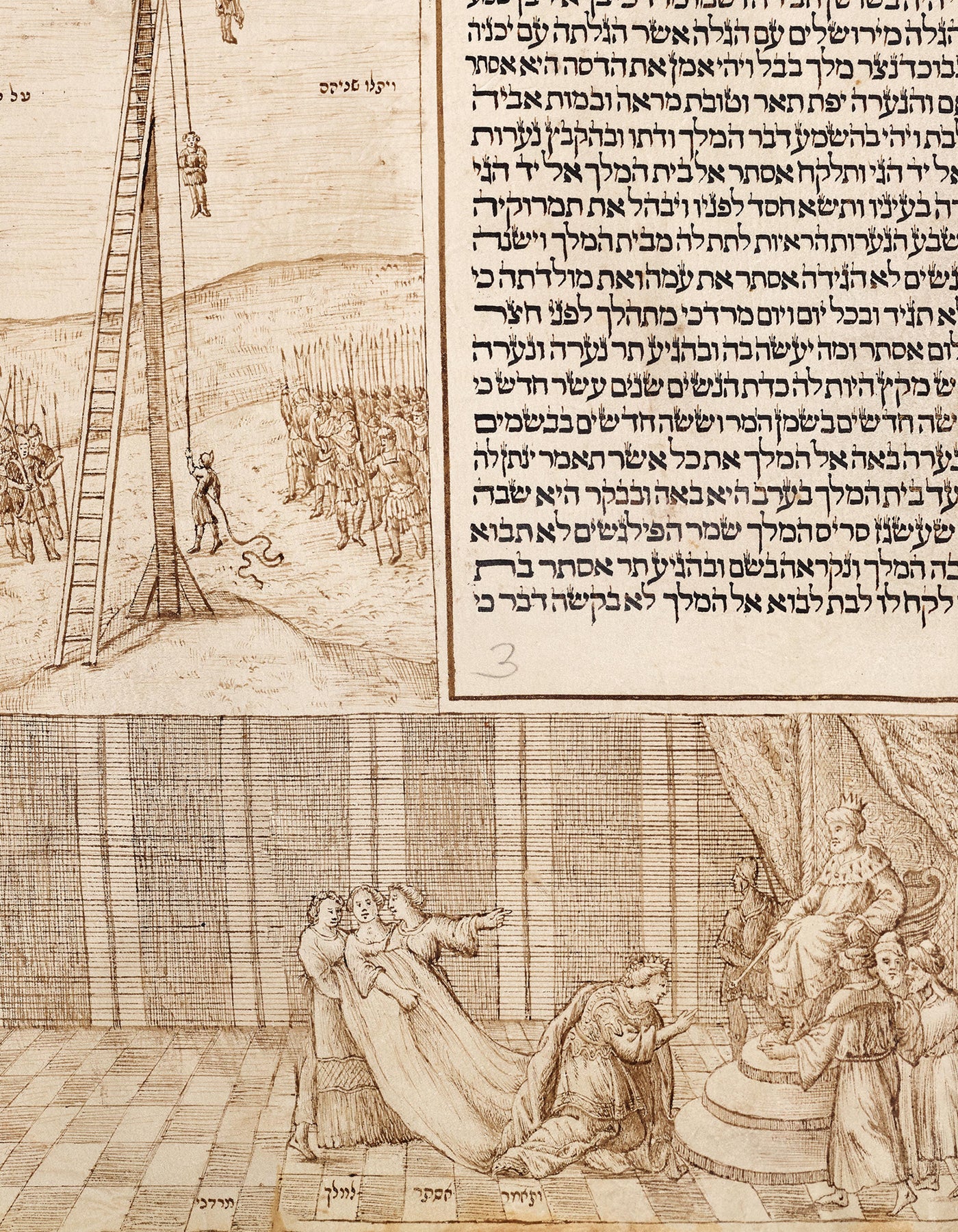
Queen Esther in Amsterdam
Dafna Siegman

Megillat Esther is the only liturgical scroll permitted by Jewish law to be decorated and illuminated. Throughout the seventeenth century, wealthy Jews took advantage of this license and commissioned dozens of elaborate scrolls of the Book of Esther. These scrolls added an artistic element to the carnivalesque atmosphere of the Purim celebrations. The Book of Esther is fertile terrain for illustrations as it contains all the elements of a great story: heroes and villains, death and violence, sex and power, war and love.
In this late seventeenth-century or early eighteenth-century scroll from Amsterdam, nearly sixty detailed illustrations surround the canonical text. It is one of a handful of scrolls to use brown sepia ink, thus imitating the visual quality of engravings. It is likely to have been commissioned by a wealthy Portuguese Jew living in Amsterdam who may have been inspired by the saintly and heroic status granted to Esther by Sephardi émigré conversos – those who had lived as closeted Jews before fleeing the Iberian Peninsula and reemerging as openly Jewish in Amsterdam. This community idealized Esther and identified with the heroine who hid her Jewish identity yet led the Jewish people to salvation.
Many illustrations in this scroll incorporate traditional Midrashic interpretations of the narrative, such as depictions of the villain, Haman, working in his previous career as a barber and having garbage thrown on his head by his daughter. Other illustrations anachronistically present the characters and scenes with contemporary European dress, architecture, and realia such as chariots, weapons, and even guillotines. Some of the images are near-replicas of contemporary non-Jewish artists’ renditions of other biblical scenes, adapted to fit the plot of the Book of Esther.


